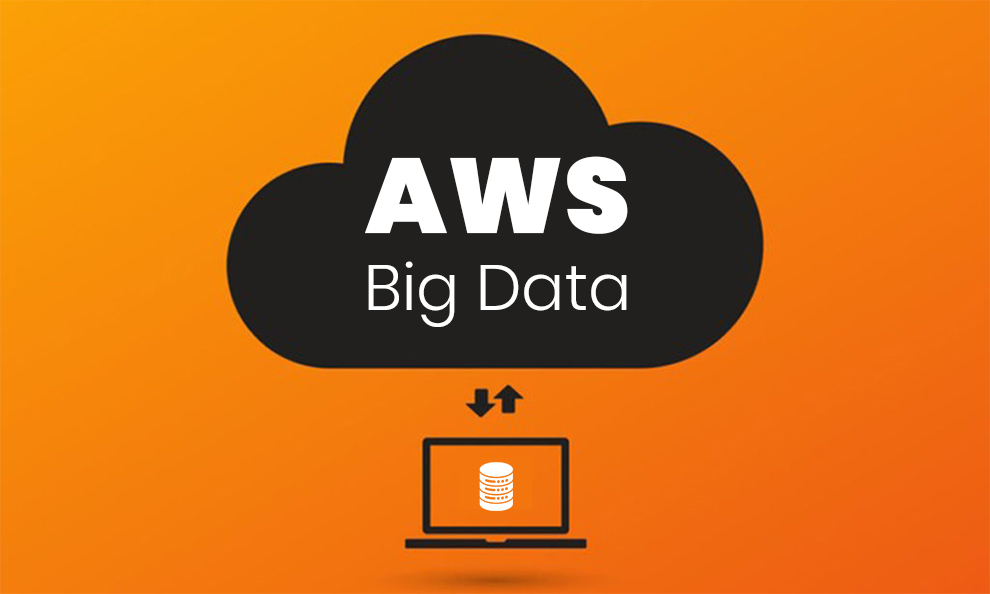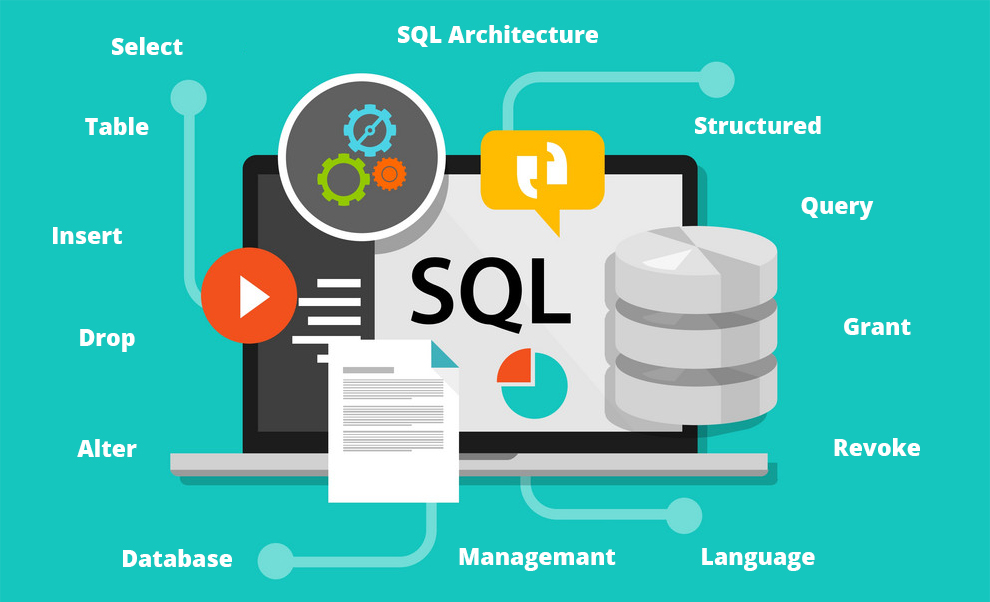In order to understand AWS Big Data, we will first briefly discuss what big data is, what cloud computing is, and what AWS is to set the background for AWS – Big data. We will then describe AWS – Big Data in detail.
In This Article
- Need for Big Data & Cloud Computing
- What’s Amazon Web Services?
- Intro to AWS-Big Data
- Data Warehousing
- Relational Database
- Data Streaming
- Object Storage
- Data Analytics
- Data Workflow Services
- AWS-Big Data Alternatives
- Amazon DynamoDB
- Amazon EC2
What is the Need For Big Data and Cloud Computing?
With an exponential increase in volume, velocity, and variety of data, it has become challenging to manage it with traditional databases.
The volume of data ranges to petabytes. The data type involved are weblogs, transactions of e-commerce, social media, and the like.
Velocity is the third V of big data. It is the speed with which the large volume of data should be collected, processed, and analyzed in order to provide actionable results.
Cloud computing is the access to data via the internet through a variety of computing resources that are hosted at a remote location, and the location is managed by a Cloud service provider.
The advantage that makes cloud computing attractive to enterprises is its agility and low cost that comes with it, and quick, innovative actions that its users can perform.
What is Amazon Web Services in simple words?
Amazon offers cloud through Amazon Web Services, offering hundreds of fully-featured services and data centers all over the world.
The AWS offers cloud infrastructure to users wherever and whenever they need it through its numerous data centers and an extensive Cloud platform with a plethora of featured services.
AWS users can deploy their application workloads or even build and deploy their applications with low latency. AWS cloud is the largest and among the most dynamic ecosystems available to users.
The users range from public organizations, SMEs, and large organizations as well as start-up companies. The users can manage the volume, variety, and velocity of their application data, owing to the flexibility, cost-effectiveness, and easy-to-use cloud computing platform offered by AWS.
Introduction to AWS-Big Data and Its Services
AWS offers secure cloud computing services to manage and analyze big data workloads. These include data warehousing, relational databases, real-time data streaming, object storage, analytics tools, and data workflow services.
Data Warehousing
AWS allows data warehousing with all the features of on-demand computing. These features include apparently unlimited storage, limitless computing capacity, system scalability with an increasing amount of data so that it can be collected, stored, and processed on a pay-to-need basis.
Data Warehousing offers various benefits as making informed decisions, data consolidation from different sources, analyzing historical data, maintaining data consistency and accuracy, and improving performance by separating transactional databases from analytics.
There are multiple services offered by AWS that integrate among themselves to deploy data warehousing solutions. The different services like migration and streaming of data, data lake infrastructure and management, data analytics, Data visualization, and Machine Learning.
Amazon Redshift is a data warehouse service that efficiently analyzes the data with the help of Bi tools. It works for data sets from gigabytes to petabytes.
Redshift uses columnar storage technology to deliver fast query and IO performance for any size of the dataset. It further provides automation of various administrative tasks like monitoring, backing up, or securing data warehouse, thus managing and maintaining the big data easily.
Relational Database
AWS offers migrating data from relational databases to Amazon Simple Storage Service using Database Migration Service. Businesses need to deal with structured, semi-structured, and unstructured data sets.
They, therefore, require a different approach to store data formats in a centralized repository from where data can be viewed and understood in a better way.
The process for forming such a repository or data lake involves data migration, data discovery, ETL (Extraction, Transformation, and Loading), and Analysis. This data lake is the relational database reinvented, thus modernizing the infrastructure for continuous business.
Data Streaming
Data Streaming is facilitated by AWS through various services like Amazon Kinesis and Amazon EC2. Streaming of a variety of data like log files, online purchases, gaming activity, social media activity, financial trading activity, etc., needs to be extensively processed sequentially as well as incrementally.
It is used for analytics like sampling, aggregations, and correlations. Once processed, it offers the users insight into their business, and they can respond to situations for the benefit of their business.
Amazon Kinesis data streaming allows easy loading and analyzing data streams and enables the users to build custom streaming data applications.
It offers Data Firehose Service, Data Streams Service, and Managed Streaming Service. Another way of data streaming is through creating it on Amazon EC2 and EMR.
This alternative solution can avoid infrastructure provisioning of storage and processing frameworks. The Amazon MSK and Apache Flume allow streaming data storage layer, and Apache Spark Streaming and Storm allow stream processing layer.
Object Storage
Object storage technology considers data as objects to be stored in a single large repository. This repository is distributed among several storage devices rather than dividing them into files and folders.
These devices can be grouped together into large storage pools and can be distributed among different locations, thus allowing scaling, availability, and resilience of data.
Object Storage is built to retrieve unlimited data from anywhere, and this is offered as Amazon Simple Storage Service (S3). Amazon S3 offers its users to store and protect large data for various use cases like cloud apps, mobile apps, or data lakes.
Data Analytics
AWS offers various analytics services like moving and storing the data, Data lakes, big data, ML, and more. The data of any volume can be stored and analyzed at a cost-effective place.
The services facilitate automating several time-consuming tasks. Data and analytics approaches can be combined using Amazon S3. AWS Analytics offers excellent insights as compared to data warehouses or silos.
AWS services are purpose-built so that data can be quickly extracted using a suitable tool from the variety of AWS Analytics tools. These tools allow users to define and manage security centrally so that industry-specific regulations are satisfied.
They have Machine Learning integrated within them through Amazon SageMaker, making it easier for users to build, train and deploy ML models easily.
Amazon Elastic MapReduce (EMR) is a web service that processes volumes of data rapidly and cost-effectively using Apache Hadoop. The latter is an open-source framework for big data analytics. EMR manages and maintains the infrastructure and software required for the Hadoop cluster.
Data Workflow Services
Amazon Simple Workflow Service allows the developers to build, run, track and coordinate the tasks that are sequential. The main concepts in SWF are workflows that are a collection of tasks. The collections of related workflows are domains.
Actions are implemented by activity workers, and coordination logic is implemented by deciders. The major benefits of AWS SFW include logical separation, reliability, simplicity, scalability, and flexibility.
It allows logical separation of business logic from stepwise logic of the background task. The user can manage the paraphernalia of the application separately from the core business logic.
The tasks are redundantly stored, reliably dispatched, tracked, and the latest state is maintained.
More on AWS-Big Data
The various big data options offered by AWS Cloud are Amazon Redshift, Amazon Kinesis, Amazon Elastic MapReduce, Amazon DynamoDB, and Amazon EC2.
Data scientists, architects, and developers can use these options to manage big data on the basis of different features such as performance, cost, scalability, flexibility, elasticity, interfaces, durability, availability, usage patterns, and interfaces.
The first three have been discussed in previous sections, and the last two are discussed below.
Amazon DynamoDB
This is a NoSQL Database service that can serve evidently any amount of traffic and store and retrieve data. This service offloads the administrative tasks in a distributed database cluster.
Amazon Dynamo DB stores structured data in tables and allows read and write access with low latency up to 400KB. It, therefore, accomplishes the latency requirements of highly demanding applications.
It can be integrated with other Amazon services for analytics, data warehousing, Backing up, and archiving.
Amazon EC2
This is an ideal platform for operating self-managed big data analytics on AWS infrastructure. AWS EC2 can run almost every software installed over Windows or Linux virtualized environments. AWS provides a pay-as-you-go pricing model for running applications on it.




